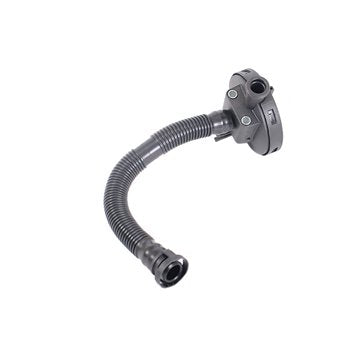How a Clp Engine Can Boost Effectiveness in Numerous Industries
The introduction of CLP engines notes a substantial change in operational performance across various fields, driven by their capacity to maximize gas usage and lessen downtime. As companies progressively focus on sustainability along with effectiveness, the duty of CLP engines ends up being even extra critical.
Summary of CLP Engines
CLP engines, or Continuous Liquid Propellant engines, stand for a considerable innovation in propulsion modern technology, especially for area applications. These engines utilize a continual feed system that permits the sustained expulsion of propellant, leading to boosted effectiveness and performance contrasted to standard solid or hybrid propulsion systems. By keeping a continuous flow of fluid propellant, CLP engines can accomplish more specific thrust control, which is essential for maneuvering spacecraft in numerous mission circumstances.
The style of CLP engines integrates innovative products and innovative fuel monitoring systems. clp engine. This leads to reduced weight and increased integrity, necessary factors for long-duration room missions. The constant operation lessens the risk of burning instability, a common difficulty in conventional rocket engines.

Benefits in Production
The manufacturing of Constant Fluid Propellant (CLP) engines offers a number of significant benefits that boost both performance and cost-effectiveness. Among the key benefits is the structured manufacturing process, which minimizes the complexity connected with traditional propulsion systems. By utilizing liquid propellant, producers can achieve greater precision in engine efficiency, bring about maximized energy outcome and reduced waste.
In addition, CLP engines promote a greater degree of modularity, allowing for easier assimilation right into different manufacturing lines. This adaptability can dramatically reduce lead times and boost general operational flexibility. Using CLP innovation also often tends to decrease the requirement for comprehensive maintenance due to less relocating parts, which converts into reduced downtime and functional costs.

Applications in Logistics
Leveraging Continuous Liquid Propellant (CLP) engines in logistics provides significant advantages in operational efficiency and reliability. These engines offer a robust solution for various transportation demands, making it possible for the smooth activity of items throughout huge distances. The fundamental style of CLP engines permits constant power output, which translates right into smoother and extra foreseeable transport routines.
Among the crucial applications of CLP engines in logistics remains in heavy-duty freight transportation, where they can drive both ground and airborne automobiles. Their capacity to preserve high efficiency under differing lots conditions ensures that delivery timelines are fulfilled, thereby boosting client contentment. In addition, CLP engines can be incorporated right into automated logistics systems, promoting real-time monitoring and maximizing route planning.
Moreover, the toughness of CLP engines decreases maintenance downtime, allowing logistics companies to maximize their functional abilities. This is especially beneficial in warehousing procedures, where effectiveness in dealing with and delivering products is important. As logistics proceeds to develop, the integration of CLP engines stands for a forward-thinking technique that not only boosts performance yet also sustains the market's expanding demands for integrity and speed.
Influence on Power Efficiency
Just How do Continuous Fluid Propellant (CLP) engines improve power efficiency in transportation? CLP engines make use of a constant circulation of liquid fuel, maximizing combustion procedures and keeping a stable drive result. This style decreases energy losses connected with standard combustion engines, where gas shipment can vary and result in inadequacies.
The continuous operation of CLP engines enables an extra efficient thermal cycle, leading to greater details impulse compared to conventional engines. clp engine. This equates to minimized gas intake for the same amount of work done, substantially decreasing operational costs across various transportation sectors, including air travel and maritime markets
Moreover, the capacity of CLP engines to keep ideal performance under varying tons problems minimizes page the demand for constant velocity and slowdown, additionally boosting gas effectiveness. Enhanced energy effectiveness not only adds to cost savings yet additionally leads to decrease greenhouse gas exhausts, straightening with international sustainability objectives.
Future Trends and Innovations
Arising advancements in Continuous Fluid Propellant (CLP) engine innovation pledge to reinvent the landscape of transportation efficiency and sustainability. As sectors pivot towards greener options, CLP engines stand at the leading edge, integrating cutting-edge products and style approaches that enhance efficiency while lessening environmental impact.
Among the most promising fads is the adoption of hybrid systems that combine CLP engines with renewable resource sources. This harmony can enhance fuel intake and minimize emissions, straightening with worldwide sustainability goals. Improvements in computational fluid characteristics (CFD) are assisting in the design of even more aerodynamically efficient engines, leading to lowered drag and enhanced gas performance.
Additionally, the growth of smart surveillance systems learn this here now is readied to boost operational effectiveness. These systems leverage information analytics and IoT technology to enhance engine performance in real-time, making special info sure that the engines operate within their most efficient parameters.
As research remains to explore alternate propellant solutions-- such as biofuels and synthetic gas-- the future of CLP engines looks appealing. By harnessing these innovations, sectors can not only enhance their efficiency yet likewise add considerably to a cleaner, a lot more sustainable future in transportation.
Conclusion
In final thought, CLP engines represent a substantial innovation in efficiency across multiple industries. The integration of advanced products and less relocating components decreases maintenance requirements, while positioning with sustainability goals positions CLP engines as a critical technology for the future.